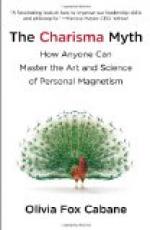Milligan and Nixon tell us that the Tasmanians believed in the existence of evil and sometimes of avenging spirits, destroyers of the guilty. They supposed that the shades of their friends or enemies returned, and caused good or evil to befal them; and according to Milligan there were four kinds of spirits. Purely superstitious rites were used for marriage. Old women and witches were often the arbiters of peace and war between the tribes, and they had the right of pardoning. Sorcerers intervened in many social acts, and before beginning their operations and incantations they revolved the mysterious Mooyumkarr, an oval piece of wood with a cord, which was certainly connected with phallic superstitions. Bonwick asserts that on many private and public occasions, the more skilled sorcerers called up spirits with appropriate ceremonies and formulas. They were powerful, and produced diseases, and were able to exert malign influence, and the urine of women, human blood, and ashes were superstitiously used as remedies against their spells.
The Tasmanian who wished to hurt or bewitch any one, procured something belonging to his enemy, and especially his hair; this, was enveloped in fat and then exposed to the action of fire, and it was thought that as it melted, the man himself would waste away. They feared lest the evil spirit evoked by the enchantments of an enemy might creep behind them in the night to steal away the renal fat, an organ with which various physiological superstitions were connected. They believed that stones, especially certain kinds of quartz crystals, were means of communication with spirits, with the dead, and also with absent persons. A woman often wore round her neck the phallus extracted from the body of her dead husband. The movements of the sun and moon, and some of their phases, had a mythical bearing on various social acts, or on the date of their assemblies, since the sun was the object of great veneration; and the full moon, the epoch of assemblies, was celebrated with feasting and dancing. Dances of many different kinds were connected with traditional myths, astrological superstitions, and the phallic worship. Some remains of circular buildings and concentric compartments, discovered by Field and others, had reference to their feasts, assemblies, and dances. Among their cosmic myths, Milligan has preserved one relating to the double stars which perhaps refers to the invention of fire.
From this cursory view of the conditions of society in its simplest form, and among the most savage peoples, and of the mythical beliefs which prevailed under such conditions, it clearly appears how myth, dating from the first beginnings of human association, has regarded, invested, sanctioned, and generated all special acts and relations, and the whole social order, both private and public. The exercise of thought in primitive times not only consisted of mythical beliefs and associations, but this same condition of thought




